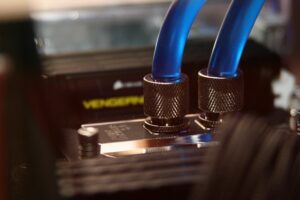Predicting 50 kW Combi Boiler Failures Through Entity Adjacency Modeling
The 50 kW combi boiler systems are versatile and efficient central heating solutions for residential…….

The 50 kW combi boiler systems are versatile and efficient central heating solutions for residential and commercial properties with multiple bathrooms, utilizing condensing technology to enhance energy efficiency. Entity adjacency modeling, a predictive approach, maps direct and indirect relationships between system components like hot water flow rate and central heating capacity to identify potential failure points and inefficiencies. This method allows tailored maintenance strategies, optimizing energy efficiency, minimizing costly breakdowns during peak demand periods, and enhancing the longevity of 50 kW combi boilers.
Entity adjacency modeling emerges as a game-changer in predicting failure patterns for 50 kW combi boilers, enabling more effective maintenance strategies. This article delves into the intricacies of understanding these complex systems and how entity adjacency analysis unveils valuable insights. We explore its potential to revolutionize predictive forecasting, offering a structured approach to enhancing the reliability of 50 kW combi boiler operations. By harnessing the power of adjacency, maintenance teams can proactively navigate the labyrinthine components, ensuring optimal performance and minimizing downtime.
- Understanding 50 kW Combi Boiler Systems: A Foundation for Adjacency Modeling
- The Power of Entity Adjacency: Unlocking Failure Patterns and Predictive Insights
- Practical Applications: Enhancing Maintenance Strategies with Adjacency-Driven Forecasting
Understanding 50 kW Combi Boiler Systems: A Foundation for Adjacency Modeling

50 kW combi boiler systems are designed to efficiently provide both central heating and hot water for large properties with multiple bathrooms. These high output boilers are versatile, suitable for a range of applications from natural gas fired to LPG compatible, making them a popular choice for residential and commercial settings. The condensing technology employed in these systems not only enhances energy efficiency but also reduces environmental impact by recycling heat that would otherwise be lost.
Understanding the intricacies of 50 kW combi boiler operations is crucial for implementing effective adjacency modeling. Adjacency models predict failure patterns by analyzing the interconnected relationships between various system components. By studying factors like hot water flow rate, central heating capacity, and the overall system design, these models enable technicians to anticipate potential issues before they escalate. This proactive approach ensures optimal performance and longevity of the boilers, contributing to energy-efficient and reliable central heating in properties of all sizes.
The Power of Entity Adjacency: Unlocking Failure Patterns and Predictive Insights

In the realm of HVAC (Heating, Ventilation, and Air Conditioning) systems, entity adjacency modeling is a game-changer, especially for understanding and predicting the performance and failure patterns of high output boilers like the 50 kW combi boiler. This innovative approach goes beyond traditional models by considering not just the direct relationships between components but also their interconnectedness and mutual dependencies. By mapping these entities and their interactions, we gain profound insights into potential failure points and inefficiencies, enabling proactive maintenance strategies.
For instance, when analyzing a 50 kW combi boiler used in a large property with multiple bathrooms, entity adjacency modeling can reveal crucial factors like hot water flow rate, central heating capacity, and energy efficiency. The model might highlight that condensers play a vital role in maintaining optimal performance by efficiently removing heat from exhaust gases, especially when paired with condensing technology. Similarly, the compatibility of the boiler with natural gas or LPG fuels, along with its ErP A rating (indicating high energy efficiency), can be highlighted, offering homeowners and professionals valuable predictive insights to enhance system longevity and reduce operational costs.
Practical Applications: Enhancing Maintenance Strategies with Adjacency-Driven Forecasting

The practical applications of entity adjacency modeling extend far beyond academic interest. By predicting failure patterns for 50 kW combi boilers, this approach empowers maintenance strategies tailored to high output boilers commonly found in large properties with multiple bathrooms. The ability to forecast potential issues before they occur is particularly valuable for natural gas fired and LPG compatible condensing technology systems, known for their energy efficiency and ErP A ratings.
This modeling technique enables engineers and homeowners to optimize hot water flow rate and central heating capacity, ensuring uninterrupted service. By identifying dependencies between various components, adjacency-driven forecasting can help prevent costly breakdowns, especially in high-demand scenarios. This proactive approach not only enhances system reliability but also contributes to overall energy conservation, making it a game-changer for maintaining modern, energy-efficient homes.
Entity adjacency modeling emerges as a powerful tool for predicting failure patterns in complex systems like the 50 kW combi boiler. By understanding the interconnected relationships between components, this approach enables more effective maintenance strategies and proactive forecasting. Leveraging the insights gained from adjacency analysis, professionals can enhance system reliability, minimize downtime, and optimize resource allocation for these vital heating solutions.







